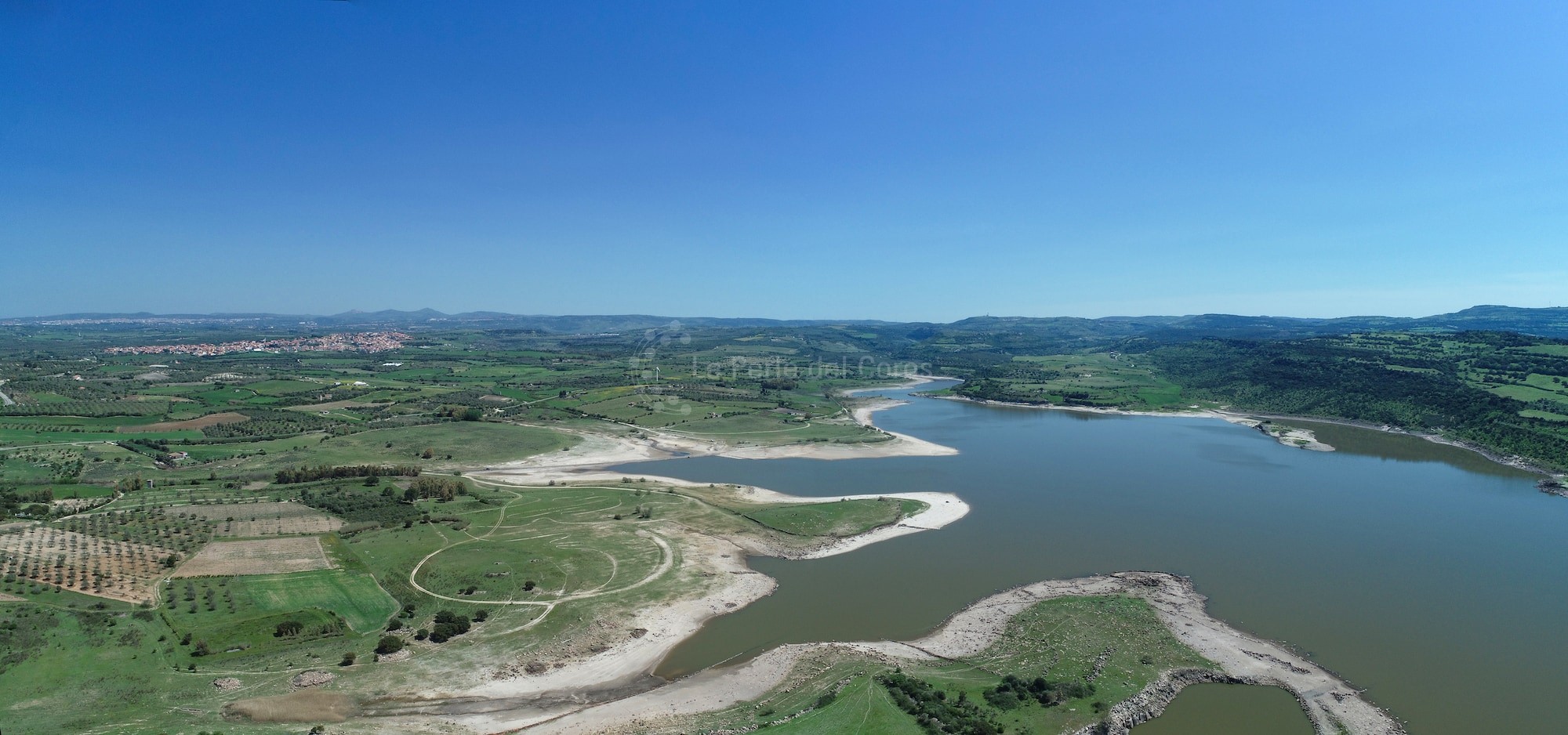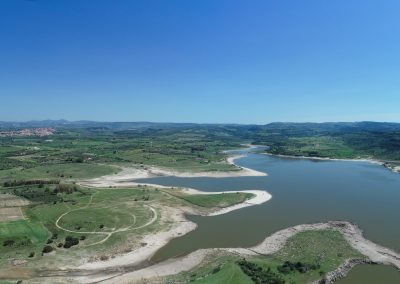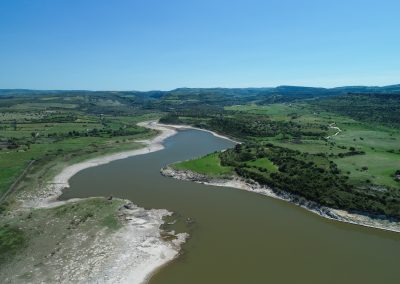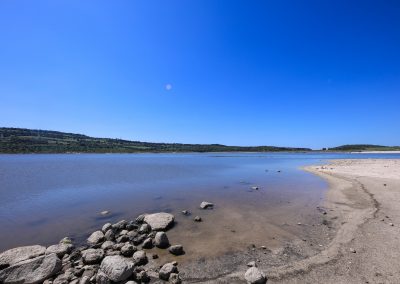
Uri
Lake Cuga
Lake Cuga is located in the Cuga area, five kilometres from Uri on the road to Alghero. It is an artificial water basin with a capacity of 25 million cubic metres, used for irrigation. Lake Cuga is fed by the river Cuga-Barca (Ittiri), and was built in 1965 with a forty-two-metre-high rock filled barrier. The executive project was entrusted to engineers Giuseppe Sapienza and Velio Princivalle, in 1955, and to engineer Samuele Paolo Algranati, in 1969. The lake is connected to Lake Surigheddu, with a capacity of 2,120,000 cubic metres, located on the Temo river. Through a main allocator that directs the waters from the Cuga in the Nurra region, the two lakes should be able to meet the irrigation needs of the entire Nurra region of Alghero. his area is characterised by many remains left by ancient humans. To prevent the waters of Lake Cuga from submerging the church of Saint Leonardo, the church was faithfully rebuilt, stone by stone, a little further uphill. Unfortunately, before the archaeologists had time to study the nuraghe Peppe Gallo in-depth, it was submerged (tn* nuraghe: large megalithic, tower-shaped, prehistoric stone structures found in Sardinia, dating from the second millennium BC to the Roman conquest). This nuraghe in particular is very interesting because carbon dating tests indicate it was built between the 6th and 5th centuries BC, therefore very late in the Nuragic Era. The monument, submerged for most of the year, is visible when the lake is dry. Near the lake’s banks, where it is possible to do sports fishing, there are several other nuraghe besides Peppe Gallu: nuraghe Pigalvedda, nuraghe Attentu, nuraghe Su Cuttu, nuraghe Sa Curdiol, nuraghe Alzolasa Cudina, nuraghe Bilianu Pinna and nuraghe Chessedu. The majority of these structures are partially or entirely submerged during periods of maximum water level, then resurfacing during dry periods. There are also remains of Roman settlements, such as the bases of several huts. The landscape is quite spectacular, it is a habitat for many rare wild water birds and a paradise for sports fishing, enlivened by the Kuga Festival in August. The festival endeavours to add value to the lake with many activities done in contact with nature, along with camping areas and services of all kinds. During the festival numerous activities alternate with sports exhibitions, for example, kitesurfing, indoboard, optimist sailing, canoeing, kayaking, archery, windsurfing, sports fishing competitions, grass volleyball, green soccer, Labrador life-saving demonstrations, mountain biking, horse riding, karate exhibitions, motorbike rallies, road rallies, hunting exhibitions with dogs and guided tours of the nuraghe present in the area.



